
Carmen is an opera in four acts by the French composer Georges Bizet. The libretto was written by Henri Meilhac and Ludovic Halévy, based on the novella of the same title by Prosper Mérimée. The opera was first performed by the Opéra-Comique in Paris on 3 March 1875, where its breaking of conventions shocked and scandalised its first audiences. Bizet died suddenly after the 33rd performance, unaware that the work would achieve international acclaim within the following ten years. Carmen has since become one of the most popular and frequently performed operas in the classical canon; the "Habanera" and "Seguidilla" from act 1 and the "Toreador Song" from act 2 are among the best known of all operatic arias.

Renée Marcelle "Zizi" Jeanmaire was a French ballet dancer, actress and singer. She became famous in the 1950s after playing the title role in the ballet Carmen, produced in London in 1949, and went on to appear in several Hollywood films and Paris revues. She was the wife of dancer and choreographer Roland Petit, who created ballets and revues for her.
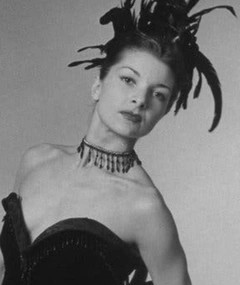
Colette Janine Marchand was a French prima ballerina and actress. She was nominated for the Academy Award for Best Supporting Actress in 1952 for her performance as Marie Charlet in Moulin Rouge, directed by John Huston.

Roland Petit was a French ballet company director, choreographer and dancer. He trained at the Paris Opera Ballet school, and became well known for his creative ballets.

Altynai Abduakhimkyzy Asylmuratova is a Kazakh-born former ballerina who is artistic director of the ballet company at Astana Opera. She is a former prima ballerina with the Kirov Ballet and a guest artist all over the world.
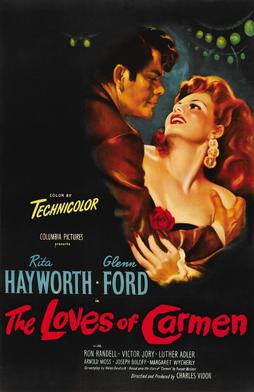
The Loves of Carmen is a 1948 American adventure drama romance film directed by Charles Vidor. The film stars Rita Hayworth as the gypsy Carmen and Glenn Ford as her doomed lover Don José.
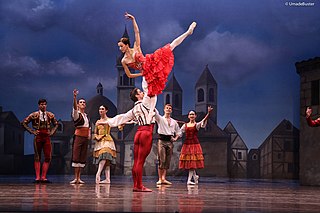
Don Quixote is a ballet in three acts, based on episodes taken from the famous novel Don Quixote de la Mancha by Miguel de Cervantes. It was originally choreographed by Marius Petipa to the music of Ludwig Minkus and first presented by Moscow's Bolshoi Ballet on 26 December [O.S. 14 December] 1869. Petipa and Minkus revised the ballet into a more elaborate and expansive version in five acts and eleven scenes for the Mariinsky Ballet, first presented on 21 November [O.S. 9 November] 1871 at the Imperial Bolshoi Kamenny Theatre of St. Petersburg.
Matthew Bourne's The Car Man is a dance production by British choreographer Matthew Bourne. It previewed for the first time on Tuesday, May 16, 2000, at the Theatre Royal in Plymouth, England, and was subsequently staged at the Old Vic in London in September of that year.

Le Jeune Homme et la Mort is a ballet by Roland Petit, choreographed in 1946 to Bach's Passacaglia and Fugue in C Minor, BWV 582, with a one-act libretto by Jean Cocteau. It tells the story of a young man driven to suicide by his faithless lover. Sets were by Georges Wakhévitch and costumes variously reported as being by Karinska or Cocteau. Petit is purported to have created Le Jeune Homme et la Mort for his wife-to-be Zizi Jeanmaire, but it was danced by Jean Babilée and Nathalie Philippart at its 25 June 1946 premiere at the Théâtre des Champs-Élysées with costumes by Tom Keogh.

Carmen: Duets & Arias is an album released in 2010 by Italian tenor, Andrea Bocelli. The album is a collection of arias of Georges Bizet's opera Carmen, including duets with Welsh bass-baritone, Bryn Terfel, Russian mezzo-soprano Marina Domashenko, and Italian soprano Eva Mei, from the French opéra comique.
Stéphane Bullion is a retired French Étoile dancer of the Paris Opera Ballet.
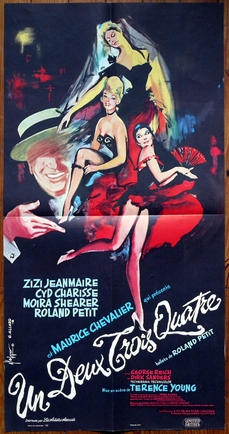
Black Tights is a 1961 French anthology film featuring four ballet segments shot in Technirama and directed by Terence Young.

Carmen on Ice is a 1990 dance film with a choreography for figure skaters made in Germany. The music is based on the opera Carmen by Georges Bizet in an orchestral version arranged especially for this film. In contrast to figure skating movies of former times, Carmen on Ice is a film without spoken dialogue, which is an innovation in the history of figure skating.

Manuel Legris is a French ballet dancer. He is an étoile with the Paris Opera Ballet for 23 years. On September 1st, 2010, he became the director of the Vienna State Ballet. In December 2020, he was appointed artistic director of the La ScalaTheatre Ballet.

Carmen Suite is a one-act ballet created in 1967 by Cuban choreographer Alberto Alonso to music by Russian composer Rodion Shchedrin for his wife, prima ballerina assoluta Maya Plisetskaya. The premiere took place on 20 April 1967 at the Bolshoi Theatre, Moscow. The music, taken from Bizet's opera Carmen and arranged for strings and percussion, is not a 19th-century pastiche but rather "a creative meeting of the minds," as Shchedrin put it, with Bizet's melodies reclothed in a variety of fresh instrumental colors, set to new rhythms and often phrased with a great deal of sly wit. Initially banned by the Soviet hierarchy as "disrespectful" to the opera for precisely these qualities, the ballet has since become Shchedrin's best-known work and has remained popular in the West for what reviewer James Sanderson calls "an iconoclastic but highly entertaining retelling of Bizet's opera."
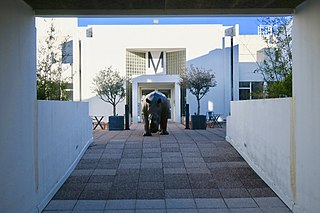
The Ballet National de Marseille is a dance company based in Marseille, France. The company combines modern dance and classical ballet.

Natalia Matsak is a Ukrainian ballet dancer, prima ballerina in the National Opera House of Ukraine, and an Honored Artist of Ukraine.
Serge Perrault was a French ballet dancer and teacher.
Christiane Vaussard was a French ballet dancer, teacher and choreographer, and an Etoile with the Paris Opera Ballet.
Irène Lidova was a Russian-French dance critic, writer, presenter and producer. She worked in fashion journalism for the magazine Vu before reviewing dance for the weekly literary publication Marianne. Lidova worked as an organiser for concert performances and co-established the Les Ballets des Champs-Elysées in 1945. She joined Roland Petit's Les Ballets de Paris-Roland Petit in 1948 and then became an associate of Milorad Mišković's small dance company in 1956. Lidova also contributed to dance magazines and wrote 27 texts for the dance photographer's Serge Lido's 27 published albums. She was named Chevalier in the Ordre des Arts et des Lettres in 1979.